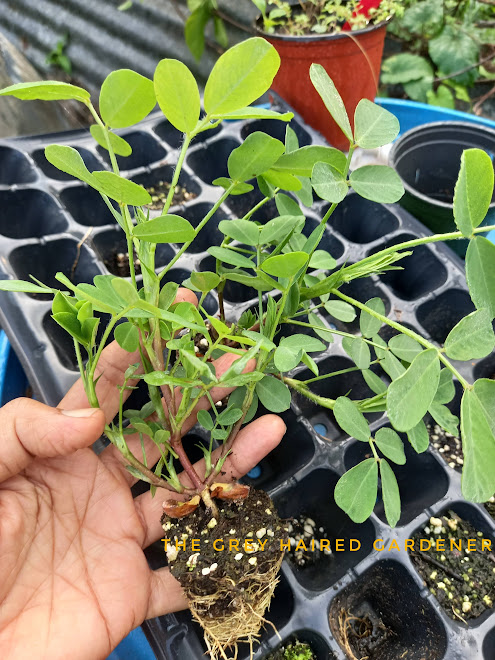Ever thought you could grow peanuts in your backyard? Better yet ever thought you could grow peanuts in pots. I hadn’t either—until I tried it. Let me tell you, there’s something deeply satisfying about pulling a whole plant from the soil and finding it studded with real, honest-to-goodness peanuts. It’s like unearthing treasure with a trowel.
So, Why Peanuts?
They’re easy. Surprisingly easy because they don’t need much babysitting. If you’ve got sunshine, well-drained soil, and a touch of patience, you're halfway there.
I planted mine just after the dry season started easing up last year. I tucked a few raw, unsalted shelled peanuts from the supermarket into seedling trays and waited. To my surprise, they grew! Later, I transplanted them into garden pots.
Peanuts aren't just a crop—they're a conversation starter. Friends visiting the garden would always pause and ask, “Wait... you’re growing peanuts?!” Yes, yes I am.
Sunshine & Soil: The Peanut's Two Best Friends
Peanuts love the sun—at least 6 to 8 hours of it every day. I made sure mine got prime real estate in the garden: full exposure, front row seats to the Caribbean sun.
As for soil, they prefer it light and sandy. That’s key because once they flower, they do something kinda weird: they send down little pegs into the soil, and that's where the peanuts actually form. If your soil is heavy or compacted, those pegs struggle. I added compost and a bit of coarse sand to loosen things up in the pots.
Compost ready to be added to soilImage Credit: Joke Vanderleij from Pixabay
Watering: Keep It Even, Not Soggy
Peanuts like consistency when it comes to water. I watered deeply once or twice a week, depending on the rain, especially once the plants started flowering. Don’t drown them, though—they hate soggy roots. Good drainage is crucial.
Fertilizer: Less Is More
Since peanuts are legumes, they make their own nitrogen (how cool is that?). I added a handful of well-rotted compost at planting, and that was it. No fancy feeding schedules, no constant fussing. They grew strong and green on their own.
Flowering & Pegging
Around the 5-week mark, pale yellow flowers popped up. It was subtle and quick—if you blink, you’ll miss it. Soon after, I noticed the pegs poking downward into the soil. That’s when the magic starts underground. From there, it's just a waiting game.
Yellow Peanut Flower: (Image Credit: Pexels.com) Image Credit: PixabayPests and Problems
To my surprise, peanuts are pretty sturdy. I had a minor aphid issue early on, but a quick blast of soapy water sorted that out. I also kept an eye out for fungal spots during the wetter spells. Overall, they're not drama queens.
Image showing aphids on a non-peanut leaf. (Image credit: Hans from Pixabay)Harvest Time!
About four and a half months after planting, the leaves began to yellow—my cue to dig in. Literally. I used a hand garden fork and loosened the soil carefully to avoid damaging the pods. Lifting the plant was like pulling up a bouquet of peanuts—easily one of the most exciting harvest moments I’ve had.
I let the whole plant dry under my shed for a few days, then clipped off the pods and laid them out to cure fully. The smell? Earthy and fresh—like a farmer’s market in my own backyard.
Image Credit: Pexels.comKitchen Joys
Homegrown peanuts are next-level delicious. I roasted a batch with sea salt (heaven) for fresh eating and some to add to my homemade granola. I also blended some into peanut butter (a little chunky, just how I like it). Suddenly, peanuts weren’t just snacks—they were ingredients.
Final Thoughts from the Garden Bench
Growing peanuts taught me that sometimes, the most unfamiliar crops are the most rewarding. I started with curiosity and ended with a bowl of homegrown goodness and a garden story I’ll be telling for years.
So go ahead—try something new in the garden this season. You don’t need acres of land or fancy tools. Just a bit of soil, some sunshine, and the willingness to get your hands dirty.
You might just surprise yourself.
Happy digging,
The Grey-Haired Gardener🌸


.jpg)







.jpg)


No comments:
Post a Comment